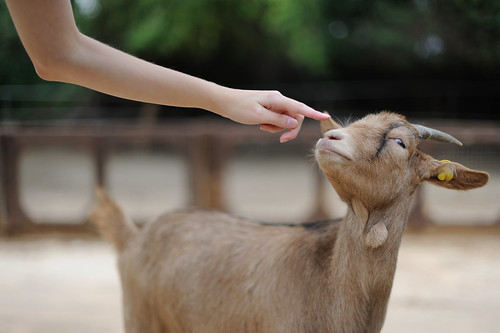
Since many of you have asked about goat farming, I am going to write a series of posts that will provide basic introduction, information about a centrally sponsored scheme, project cost at a glance, goat farm register for record keeping, and general tips on goat farming.
Goat has been considered as dairy and meat animal for long in India. It has been given the popular name of "poor man's cow" for milk production. Goats are small animals and easy to manage. They are economical to the poor farmers and demand less labor for milk, meat and fiber. Goats provide a considerable source of income and occupation to a sizeable rural population, especially the economically and socially backward classes of the society in India.
Goat is probably the only animal which is bred for multiple purposes, such as, milk, meat, skin, hide, manure and hair.
- Goat milk is cheap, wholesome, easily digestible and nutritious. It is mostly recommended for infants, invalids and other suffering from tuberculosis, anemia, peptic ulcers and prolific stances etc.
- Goat manure is also a valuable asset and it can be easily handled, stored and applied to the trees and plants as a fertilizer.
- It is the principal meat producing animal in India. Its flesh is commonly preferred to other meat and fetches better prices than mutton and beef in the market.
- Goat skins are used for shoes, gloves, book binding, jackets and other item.
- Goat may be regarded as the most valuable animal that can be maintained at low cost with more returns, if properly controlled through production and management.
The importance of goat farming has increased now due to their economic return. They need minimum in put such as supplementary feeding, veterinary medicine and labor. The growing demand for meat and skins has also contributed to their farming commercially. Goats require low initial investment as compare to cattle and buffalo. Because of their smaller body size and docile nature, they pose least management problems.
Goat is the only livestock species that lives on ecology where grazing material is virtually not available. Goats survive on available hardy shrubs under diverse harsh environments is low fertility area. Goat provides more meat and milk per unit live weight per year than cattle, sheep and camel. They are 130% more economical than cattle and 135% more than sheep. They are responsible for providing employment and means of earning to the rural poor.
A specific focus on improved system of goat production and post harvest technology can further increase the current level of employment and alleviate protein hung. Thus goat farming has great potential in India. Hence, goat rearing under stall fed conditions is one of such rural enterprise that can be done on a commercial scale with the twin objective of employment generation and income creation. The location of goat unit should be such that there is ample facility for marketing goat products at reasonable price.
Sheep and goats are generally reared by the poor households of the rural population and provide meat, wool and manure to the society. These animals have wide adoptability to suit varied agro-climatic conditions. Thus, development of small ruminants in an integrated manner holds great potential for generating employment and enhancing rural prosperity.
NOTE
With this view the government of India has decided to launch a Centrally Sponsored Scheme for Integrated Development of Small Ruminants for providing Venture Capital assistance during the remaining period of XI Five Year Plan in 24 states with a focus on 114 districts for small ruminants and 12 districts for rabbits.
[photo credit: Or Hiltch]